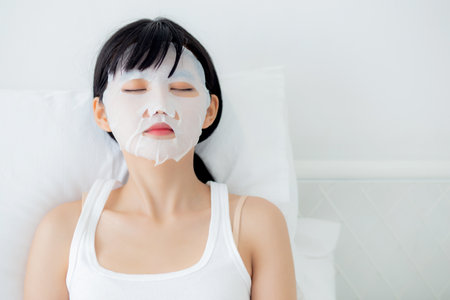1. Understanding Your Skins Healing Process
After any skin treatment—whether its a chemical peel, microneedling, laser therapy, or injectables—your skin goes through a natural healing process. Knowing what’s happening beneath the surface can help you care for your skin properly and support faster, healthier recovery.
How Your Skin Recovers
Your skin is a resilient organ designed to repair itself. Post-treatment, your body triggers a healing response that includes inflammation, regeneration, and remodeling. Heres a simple breakdown of these stages:
| Healing Stage | What Happens | Typical Duration |
|---|---|---|
| Inflammation | Redness, swelling, and sensitivity as your body sends white blood cells to the area | 1–3 days |
| Regeneration | New skin cells begin to form; collagen production increases | 3–10 days |
| Remodeling | Skin texture improves; pigmentation and tone even out over time | Several weeks to months |
Factors That Influence Healing Time
No two people heal exactly the same way. Several factors can affect how quickly and effectively your skin recovers after treatment:
- Type of Treatment: More intensive procedures like CO2 lasers take longer to heal than lighter treatments like facials or light peels.
- Your Skin Type: Sensitive or acne-prone skin may need extra care and time to recover.
- Age: Younger skin typically regenerates faster than mature skin due to higher collagen levels.
- Lifestyle Habits: Smoking, poor diet, lack of sleep, and high stress can slow down healing.
- Post-Treatment Care: Following your providers aftercare instructions makes a huge difference in both healing time and results.
Signs Your Skin Is Healing Well
You’ll know your skin is on the right track when you notice signs like reduced redness, smoother texture, and improved tone. Its normal for some flaking or mild breakouts to happen as dead skin sheds—this is part of the renewal process.
Quick Tips for Supporting Skin Recovery
- Avoid sun exposure during the first few days post-treatment.
- Use gentle cleansers and avoid active ingredients like retinol unless approved by your provider.
- Keep your skin hydrated with fragrance-free moisturizers.
- Avoid touching or picking at treated areas to prevent scarring or infection.
Your Skin Needs Time—And Patience
The healing journey is different for everyone. What matters most is giving your skin the support it needs through proper care, patience, and protection. In the next section of this guide, we’ll explore how to build an effective post-treatment skincare routine tailored to your specific treatment type and goals.
2. Essential Dos and Donts for Post-Treatment Care
Taking care of your skin after a cosmetic treatment is just as important as the procedure itself. Whether youve had a laser session, chemical peel, microneedling, or injectables, proper post-treatment care helps maximize results and prevent irritation or complications. Heres what you should—and shouldnt—do to support healthy healing.
Dos: What You Should Absolutely Be Doing
Follow these key steps to keep your skin calm, clean, and hydrated while it heals:
✔️ Gentle Cleansing
Use a mild, fragrance-free cleanser. Avoid scrubbing or using exfoliants. Pat your face dry with a clean towel instead of rubbing.
✔️ Moisturize Generously
Hydration is crucial post-treatment. Choose a gentle moisturizer that locks in moisture without clogging pores. Look for ingredients like hyaluronic acid or ceramides.
✔️ Sun Protection
Your skin will be extra sensitive to sunlight. Always wear broad-spectrum SPF 30 or higher, even if youre indoors near windows. Reapply every 2 hours if youre outside.
✔️ Follow Your Provider’s Instructions
Your skincare provider may recommend specific products or steps based on your skin type and the treatment you received. Stick to their guidelines for best results.
Donts: What to Avoid After Treatment
Avoiding certain actions and ingredients can prevent irritation and setbacks during recovery:
🚫 Skip Harsh Products
Avoid alcohol-based toners, retinoids (retinol), AHAs/BHAs (like glycolic or salicylic acid), and vitamin C until your skin has fully healed.
🚫 No Picking or Peeling
If your skin starts flaking or peeling, let it happen naturally. Picking can lead to scarring or infection.
🚫 Say No to Heat & Sweat
Avoid hot showers, saunas, steam rooms, and heavy workouts for at least 48 hours post-treatment to reduce inflammation and sensitivity.
🚫 Don’t Apply Makeup Too Soon
If possible, skip makeup for at least 24–48 hours after your treatment. When you do wear makeup again, use non-comedogenic products.
Post-Treatment Skincare Dos & Don’ts At-a-Glance
| Dos ✅ | Donts ❌ |
|---|---|
| Use gentle cleansers | Avoid scrubbing or exfoliating |
| Apply hydrating moisturizers | No retinoids, acids, or vitamin C |
| Wear SPF daily (30+) | Avoid sun exposure and tanning beds |
| Follow provider’s aftercare instructions | No picking or peeling skin flakes |
| Stay hydrated and rest well | Avoid hot environments & intense exercise |
Helpful Tip 💡
If youre unsure whether a product is safe to use post-treatment, check with your provider before applying anything new to your skin. Less is more during this time!
Your skin needs time, patience, and the right care to bounce back beautifully after any aesthetic procedure. These essential do’s and don’ts will help you stay on track toward a healthy glow.

3. Managing Sensitivity, Redness, and Irritation
After any aesthetic treatment—whether its a chemical peel, laser therapy, microneedling, or injectables—your skin is likely to feel more sensitive than usual. Redness, mild swelling, tightness, and irritation are common reactions as your skin begins its healing process. Taking proper care during this time can help minimize discomfort and reduce the risk of complications.
Understanding What’s Normal
It’s completely normal to experience some level of sensitivity right after a treatment. Heres a quick guide to what you might expect:
| Symptom | Common Causes | Duration |
|---|---|---|
| Redness | Increased blood flow due to skin stimulation | Few hours to 2–3 days |
| Sensitivity/Tenderness | Disrupted skin barrier or micro-damage | 1–5 days depending on treatment type |
| Irritation/Itching | Skin drying out or reacting to products | Temporary; should ease with moisturization |
Tips for Soothing Post-Treatment Discomfort
Use a Gentle Cleanser
Avoid harsh soaps or exfoliants. Stick to a fragrance-free, non-foaming cleanser that won’t strip your skin of its natural oils.
Apply Cool Compresses
If your skin feels hot or inflamed, apply a clean, damp washcloth (soaked in cool—not cold—water) for several minutes. This helps calm the skin and reduce redness.
Hydrate with Soothing Moisturizers
Look for moisturizers that contain calming ingredients like aloe vera, ceramides, chamomile, or hyaluronic acid. Avoid anything with alcohol, fragrances, or active ingredients like retinol or acids.
Avoid Heat and Sun Exposure
Your skin is more vulnerable post-treatment. Stay out of direct sunlight, saunas, steam rooms, and hot showers for at least 48 hours. When outdoors, wear a broad-spectrum SPF 30+ sunscreen—even if it’s cloudy.
No Scratching or Picking!
If you experience peeling or flaking (especially after treatments like chemical peels), resist the urge to touch it. Let your skin naturally shed the dead cells—picking can cause scarring or infection.
Ingredients to Look For (and Avoid)
| Soothing Ingredients (Recommended) | Irritating Ingredients (Avoid) |
|---|---|
| Aloe Vera | Fragrance/Perfume |
| Ceramides | Alcohol-based products |
| Colloidal Oatmeal | Retinol/Retinoids |
| Cucumber Extract | BHA/AHA acids (Glycolic, Salicylic) |
Pro Tip:
If you’re unsure whether a product is safe to use post-treatment, do a patch test on a small area first—or better yet, check with your skincare provider.
Treating your skin gently during the recovery period will not only make you feel more comfortable but also help you get the best results from your treatment. Your skin is doing important repair work—support it with kindness and care.
4. Importance of Sun Protection and Hydration
After any skin treatment—whether it’s a chemical peel, laser therapy, microneedling, or injectables—your skin becomes more sensitive and vulnerable to environmental stressors. Two of the most important steps you can take during your recovery are protecting your skin from the sun and keeping it well-hydrated. These simple habits can help maintain your results longer and reduce the risk of complications.
Why SPF Is Non-Negotiable
Your skin is in a fragile state after treatment, making it more susceptible to UV damage. Even short-term sun exposure can lead to hyperpigmentation, inflammation, or delayed healing. That’s why applying a broad-spectrum sunscreen with at least SPF 30 is essential—even on cloudy days or when staying indoors near windows.
What to Look for in a Post-Treatment Sunscreen:
| Feature | Why It Matters |
|---|---|
| Broad-Spectrum Protection | Shields against both UVA (aging) and UVB (burning) rays |
| SPF 30 or Higher | Provides strong enough protection for healing skin |
| Mineral-Based (Zinc Oxide/Titanium Dioxide) | Less irritating for sensitive or post-procedure skin |
| Fragrance-Free & Hypoallergenic | Minimizes risk of allergic reactions or irritation |
The Role of Hydration in Skin Recovery
Treatments like lasers and peels can temporarily disrupt your skin barrier, leading to dryness, flakiness, and tightness. Keeping your skin hydrated helps restore this barrier, reduces discomfort, and supports faster regeneration.
Tips for Staying Hydrated Inside and Out:
- Use a Gentle Moisturizer: Look for ingredients like hyaluronic acid, ceramides, or glycerin that draw moisture into the skin without clogging pores.
- Avoid Harsh Ingredients: Steer clear of alcohol-based products or exfoliants during recovery.
- Drink Plenty of Water: Internal hydration is just as important. Aim for at least 8 cups of water per day.
- Add a Humidifier: Especially helpful if you live in a dry climate or use indoor heating/AC frequently.
Quick Reminder:
If youre unsure about which sunscreen or moisturizer is best for your skin type or treatment plan, always check with your provider. Customized recommendations go a long way in optimizing your results.
Protecting your skin from the sun and keeping it well-hydrated aren’t just afterthoughts—they’re key players in how well your skin heals and how long your results last. Incorporate these into your daily routine for healthier, glowing skin post-treatment.
5. When to Seek Professional Advice
After any cosmetic treatment—whether its a chemical peel, laser resurfacing, microneedling, or injectables—your skin goes through a healing process. While mild redness, slight swelling, and sensitivity are often normal in the first few days, it’s important to know when these symptoms go beyond what’s expected.
Signs Your Skin May Need Extra Attention
If you experience any of the following signs, it could mean your skin needs extra care or that something isnt quite right. Heres a quick guide:
| Symptom | What It Might Mean | Recommended Action |
|---|---|---|
| Persistent Redness (lasting more than 5-7 days) | Possible irritation or an allergic reaction | Contact your provider for evaluation |
| Increased Swelling After 48 Hours | Could be inflammation or infection | Reach out to your clinic immediately |
| Pus or Yellow Discharge | Sign of possible infection | Seek medical attention right away |
| Bumps or Nodules Under the Skin | Could indicate product buildup or reaction (especially with fillers) | Schedule a follow-up with your provider |
| Severe Itching or Burning Sensation | Potential allergic response or over-exfoliation | Stop all active products and call your specialist |
When in Doubt, Reach Out
If youre not sure whether what youre experiencing is normal, its always better to check in with your provider. Most clinics welcome follow-up questions and prefer you contact them rather than wait until a minor issue becomes more serious.
Here’s When You Should Definitely Call Your Provider:
- Your symptoms worsen instead of improve after the first few days.
- You notice new symptoms like fever, chills, or spreading redness.
- You’re unsure about which products are safe to use during recovery.
- Your results don’t match what was discussed during your consultation.
A Quick Tip:
Always take clear photos of the affected area if youre calling or messaging your provider. This can help them assess the situation more accurately and give faster advice.
Your post-treatment journey is just as important as the procedure itself. Paying attention to your skins signals and knowing when to reach out ensures that you get the best results—and stay safe while doing so.

